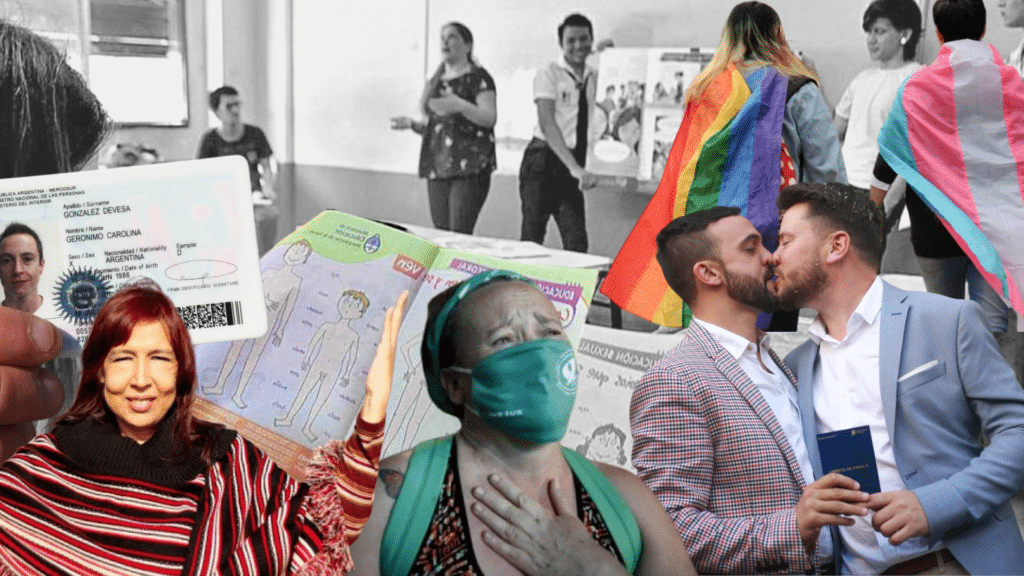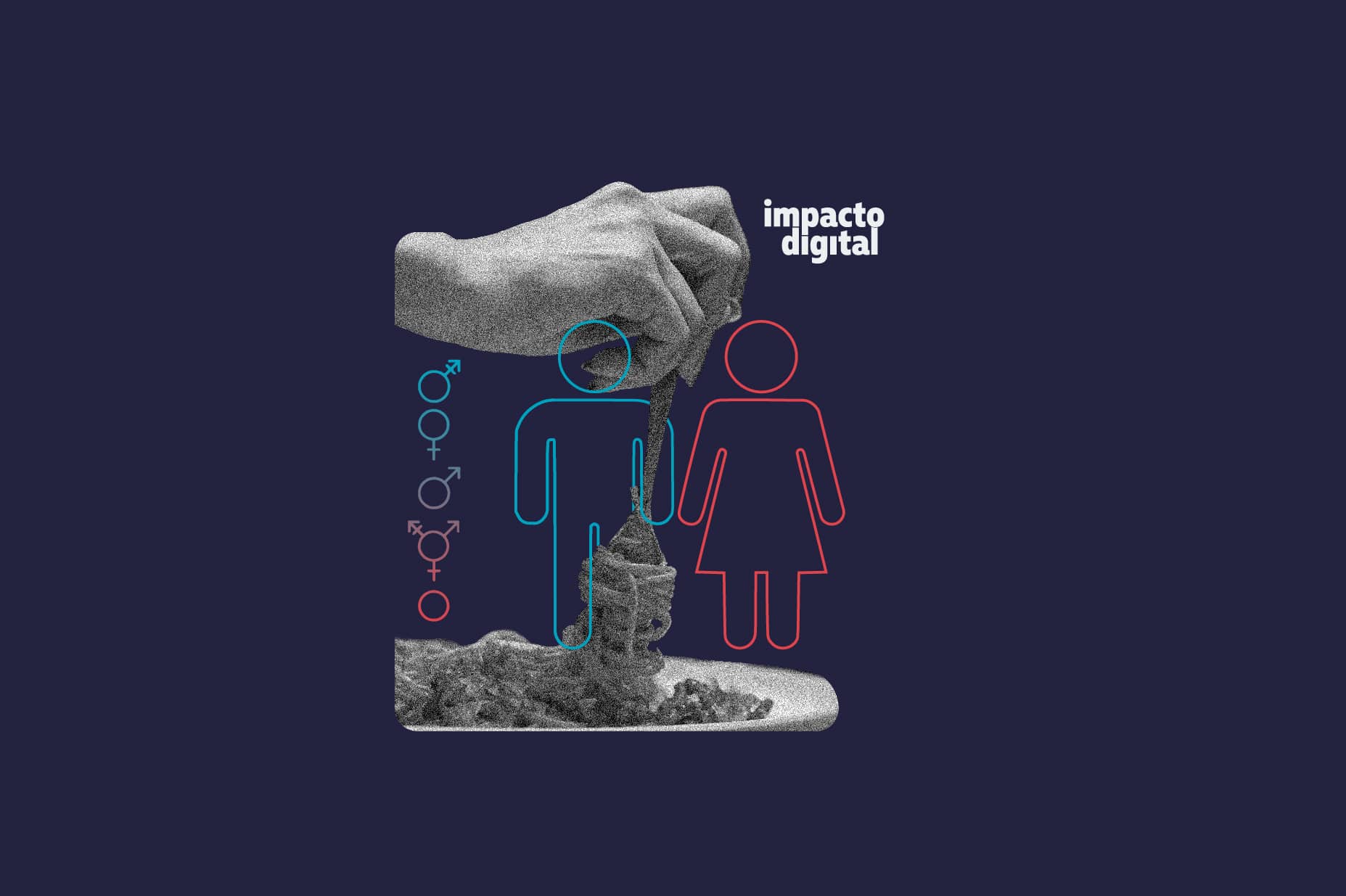Imagine a world where comprehensive sexuality education is mandatory at schools, abortion is legal, so is equal marriage and adoption, and also transgender and no binary people have the right to own an ID with their name and gender on it.
Well, that’s Argentina (my country) which is cool! but is not that dreamy either.

As a queer and feminist activist, I know in the flesh how important laws are, and the challenges involved in their subsequent implementation. I mean, the patriarchy is still here, conservative sectors continue to deny our rights and getting funds is extremely difficult.
The contexts do not change radically after a law approval, even when the situations are urgent, it takes time for Traditional institutions (as international organizations, the State and large corporations) to adapt and they need agile, flexible and innovative organizations (or projects) to balance it.
For example, Argentina’s comprehensive sexuality education law (ESI) was passed in 2006. I could grow up with ESI at my school but it didn’t happen to me or to most people in my generation.
It’s been 17 years after its enactment, conservative and anti-rights groups are obstructing its effective implementation. Even today, young people recognize the importance of comprehensive sexuality education but they say they have not received enough and feel unsatisfied with the contents.

So we took exactly that. The fact that they are interested but unsatisfied, and we invite them to think and design an advocacy program for youth in comprehensive sexuality education. We founded the Mesa de Jóvenes, a board of young people at the ages of 16 and 24, who actively participate to define our agenda.
LESSON 1:
Involve young people to drive the strategy, implementation and decision making..
That’s how We came up with It’sSexEd ( #EsConESI,), an intergenerational program that seeks to support and strengthen the activism of young people promoting the effective implementation of comprehensive sexuality education in Latin america.

In 2020 we launched the first prototype, a call for incubation projects that would later be implemented in coordination with government agencies. More than 80 projects were submitted and this resulted in podcasts, training for adults who work with teenagers, guides for teachers and web portals with information to prevent gender violence in youth, all designed by the youth itself. Our biggest innovation bet was for young people to tell the adults who implement public policies what they wanted to learn and how.

The following year, we did a national survey to find out what young people thought about the implementation of CSE. The survey brought to light the debts of the health system in terms of sexual and reproductive rights and confirmed our initial hypothesis: Despite more than 15 years of ESI, young people are unsatisfied and adults are not responding to their needs.
LESSON 2:
Respond to their real needs, not those that we assume they have.
When we focus on detecting concrete needs, we can generate highly effective, innovative and community-based solutions. And on top of that, by adding technology we can create them to be measurable, replicable and scalable.
Last year we launched EsConESI in latin america and now we are working with young people in Bolivia, Paraguay, Peru and Guatemala. Delegates from each country joined the Mesa de Jóvenes and have managed to visualize the differences and commonalities in addressing CSE at the regional level.
We also conducted a learning process for 16-24 year olds to mobilize youth for advocacy on behalf of youth-advised CSE. Everything was led and facilitated by young activists, and together we decided the curriculum and pedagogical strategies to carry it out.

This course included meetings, readings and activities, and we used instagram as a virtual classroom. Thus all the contents that were thought for a group of 30 people, are now available to many more.
After each edition, we conduct surveys and measurements to evaluate the impact of EsConESI and keep it constantly improving. Every time the better rated point by the young participants and the Mesa de Jóvenes, is the fact of feeling listened to and being able to really participate in the process.
LESSON 3:
Keep intergenerational workplaces safe and adult-centric free.
We have all gone through a time when our opinions have been rejected because we were not old enough to have an opinion. Where there were topics from older people that weren’t supposed for us, especially when it came to politics. That’s adultcentrism.
Same as mansplaining and sexism, but age applied.
We all need to bet on intergenerational dialogue and involving adolescents in the design and implementation if we want our programs and projects to work. We insist on not just going for a symbolic inclusion of youth with adults listening, rather we are transforming the implementation team itself to have more young people than adults. This also gives EsConESI participants some of their first professional opportunities and aims to ensure an adult-centric free environment. And this also applies for other causes and users!
For example Hire Trans (Contratá Trans), is another of our programs for seeking employment opportunities in the private sector for trans and non binary community. It’s led by trans people and they support recruiting areas to make their job searches trans inclusive. Even more, they are the ones who train the employees against discrimination and gender violence in the workplace. And it’s so effective!
Impacto Digital is packed with activists, that’s how we know first hand that technological and innovation developments usually not optimally implemented in human rights programs and projects.
For this reason, we believe in accompanying processes of scientific and technological transfer to the ecosystem of human rights and public policies. Sustaining collaborative work with vulnerable communities and building new narratives in social networks and other digital spaces.
That’s how we believe innovation and technological development can be put at the service of human rights.
Thanks for getting here!
You can see more notes like this in our Blog section. We also have a newsletter that you can subscribe to here.
Saudos!
Eli
Thanks to Lucia De Mateo, leader of #EsConESI, who reviewed and validated this text, and to Briseida Milán Lemus, who gave me a hand to put together the presentation.
This text comes from a presentation I made for the panel “Leveraging Technology to Advance SRHR and Gender Equality” within the framework of the NGO CSW67 Parallel Event of the FP2030, on March 17, 2023, in New York, United States.
